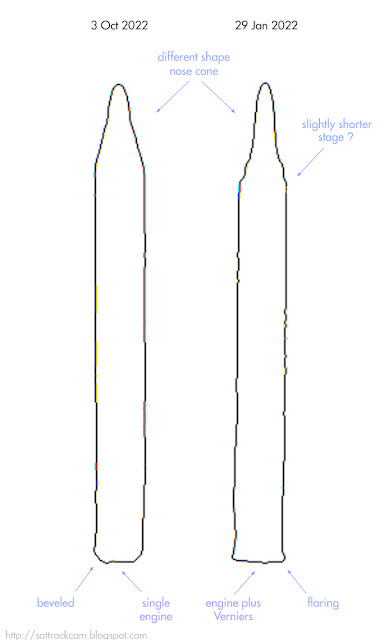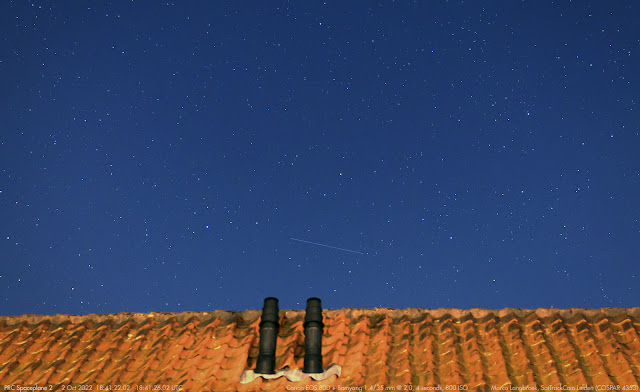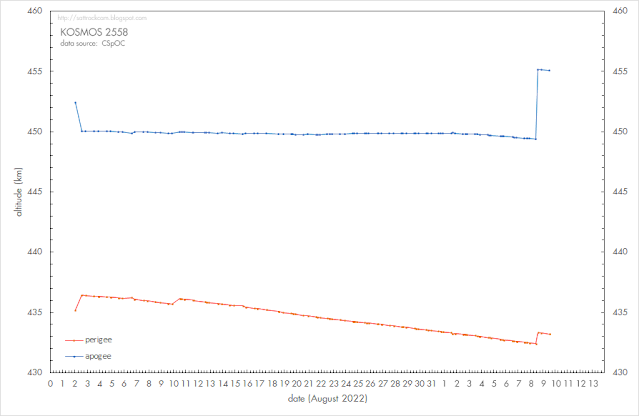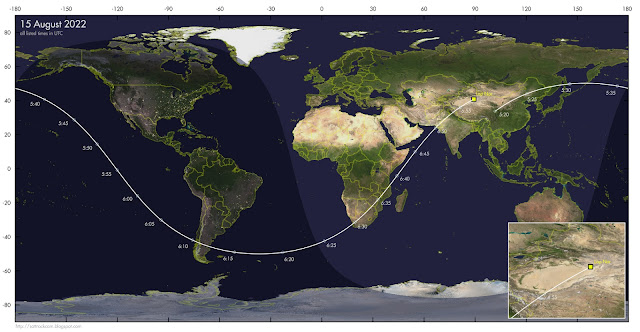 |
| click to enlarge |
On October 3rd (October 4th local time in Korea) at 22:22 UTC, North Korea launched an MRBM from Mupyong-ri. They fired it over Japan on a normal ballistic trajector, instead of on a highly lofted trajectory, causing consternation and air raid alarms to go off in northern Japan.
Firing a missile over Japan had not happened since the two Hwasong-12 launches in August and September 2017 (see earlier blog posts here and here).
Western military sources indicate a range of approximately 4600 km and an apogee at approximately 1000 km. This is at the upper theoretical limit of the Hwasong-12 MRBM.
Photographs of the launch were released (along with images of several other launches of SRBM and SLBM from the past weeks) by the North Korean State Press Agency KCNA on October 10. The surprise aspect of the images was that it seems to show a missile that is somewhat different in outlook than the Hwasong-12 we know, i.e. something new.
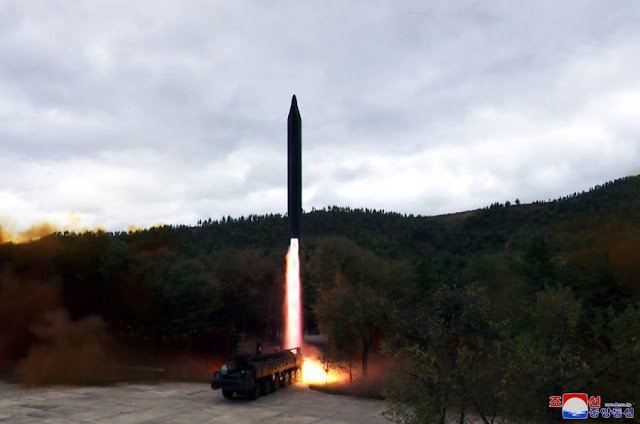 |
| October 3 MRBM launch (image KCNA) |
 |
| October 3 MRBM in flight (image KCNA) |
In the image below, I have put an image from the Hwasong-12 launch from earlier this year, January 29, launched from the same location (Mupyong-ri), next to the October 3 launch. Below it are the outlines of the two missiles as traced from the photographs.
There are subtle differences, as several people (a.o. Nathan Hunt, Ankit Panda and me) have noticed. The missile overall seems similar in length and diameter, but the nosecone with RV looks different in shape, and the first/second stage might actually be slightly taller than that of a Hwasong-12. And while the Hwasong-12 we know has a flared base of the first stage, the new missile seems to have a beveled base. In-flight images suggest it has one single engine only, whereas the Hwasong-12 we know has four Vernier engines in addition to the main engine, as does the Hwasong-14.
So this looks to be a new missile (or a new version of the Hwasong-12 or Hwasong-14).
The trajectory it has flown is longer than that of the previous two Hwasong-12 launches over Japan in August and September 2017, as can be seen in the image below. This might also point to a new missile, or a clearly improved single-engine version of the Hwasong-12 or Hwasong-14.
 |
| click to enlarge |
 |
| image KCNA |
Among the images released by KCNA is one showing Kim Jung Un looking at a computer screen depicting a missile trajectory (see image above). I rectified the map shown on the screen and georeferenced it to an equal-area map (see below), yielding the trajectory below which matches well with a 4500 km trajectory (from the map I measure a range of ~4560 km, but given the error margins in processing this map, that basically is ~4600 km):
 |
| click to enlarge |
The yellow dashed line (which was added by me as an overlay, as are the country outlines in black and yellow annotation) shows what a real ballistic trajectory would look like.
If the trajectory diagram is to scale hirozontally and vertically, then apogee should have been ~1300 km, slightly more than the ~1000 km quoted from western military sources.
The impact point of the missile is at 34.6 N, 178.3 E, close to the International Date Line. While passing over the Japanese islands, it was at an altitude of about 740-750 km, ascending towards its apogee.
From the launch images, the launch site is the same as that of the January 29 Hwasong-12 launch earlier this year: the Mupyong-ri facility (see earlier blog post here) at 40.6112 N, 126.4257 E. The treeline and pavement, and small side road, is very recognizable. The same location also saw the first successful Hwasong-14 launch on 28 July 2017 (the Hwasong-14 is a two-stage version of the Hwasong-12). If the October 3rd launch indeed is a new missile, as it looks to be, then this facility has now seen launches of three different MRBM's: Hwasong-12, Hwasong-14 and this new missile.

